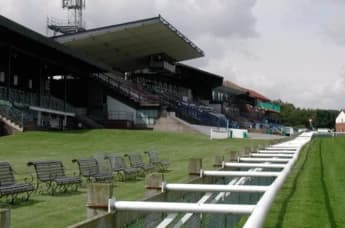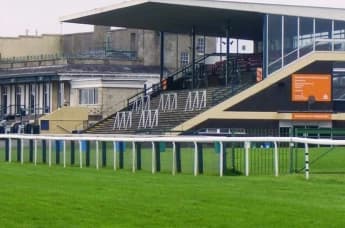Aintree Racecourse, nestled within the Metropolitan Borough of Sefton, Merseyside, England, close to the vibrant town of Liverpool, is a hallowed venue in the annals of British horse racing. Renowned globally as the level for the illustrious Grand National steeplechase, Aintree Racecourse comes alive every April, drawing spectators from far and wide for an exhilarating 3-day spectacle. Beyond the Grand National, the racecourse hosts extra conferences in May, June, October, November, and December, making sure of a year-round calendar of high-octane racing.
Historical Tapestry of Aintree
The love affair between Liverpool and horse racing dates returned to as a minimum the Tudor generation, with Nicholas Blundell organizing races at the sands of Crosby in the 18th century. Fast forward to 1829, and William Lynn, the visionary owner of the Waterloo Hotel in Liverpool's Ranelagh Street, approached the Second Earl of Sefton, William Philip Molyneux, affectionately dubbed 'Lord Dashalong,' with a bold plan to lease land for flat racing. The Earl, a fervent racing enthusiast, agreed and laid the cornerstone on 7 February 1829, ceremoniously putting a box of sovereigns within the footings.
Lynn, undeterred by the enormity of his challenge, commissioned John Foster Jr. To design a grandstand, and through 7 July 1829, the inaugural assembly at Aintree changed into a fact. The first race, the Croxteth Stakes, contested over 1 mile 2 furlongs, saw Mufti declare victory. The year 1835 marked some other milestone, as Lynn brought hurdle racing, a task that flourished with the participation of Captain Martin Becher, who famously rode Vivian to 2 triumphs. It became Becher who ignited Lynn's creativeness with memories of the Great St. Albans Steeplechase, inspiring the advent of a comparable race at Aintree.
The Liverpool Grand Steeplechase was born on 29 February 1836 with Becher's guidance. Ten gentlemen riders, every wearing twelve stone, competed, with the positive horse, The Duke, ridden through Captain Becher himself. The Duke’s triumph becomes secured below the possession of Mr. Sirdfield, the landlord of the George Inn at Great Crosby. While a few historians bear in mind this race as the primary Grand National, the 1839 event is extra extensively diagnosed as the inaugural race. The Duke went directly to repeat his success in 1837, observed with the aid of Sir William in 1838. The actual region of the 1836-1838 races is debated, with some suggesting the close by Maghull, opened in 1827 by way of landowner John Formby, as a potential web page.
The Courses of Aintree
Aintree is outstanding by way of its three separate guides:
Grand National Course: The maximum well-known of the trio, it is the level for the Grand National, a race that has etched its name into the material of wearing history.
Mildmay Course: A steeplechase course providing smaller, however similarly tough, obstacles, imparting a one-of-a-kind taste of racing excitement.
Hurdles' Course: Dedicated to hurdle races, this route examines the agility and staying power of both horse and rider, adding another dimension to the rich tapestry of racing at Aintree.
Aintree Racecourse stands as a beacon of way of life and spectacle, a place where history and the fun of horse racing intertwine in a timeless dance.







